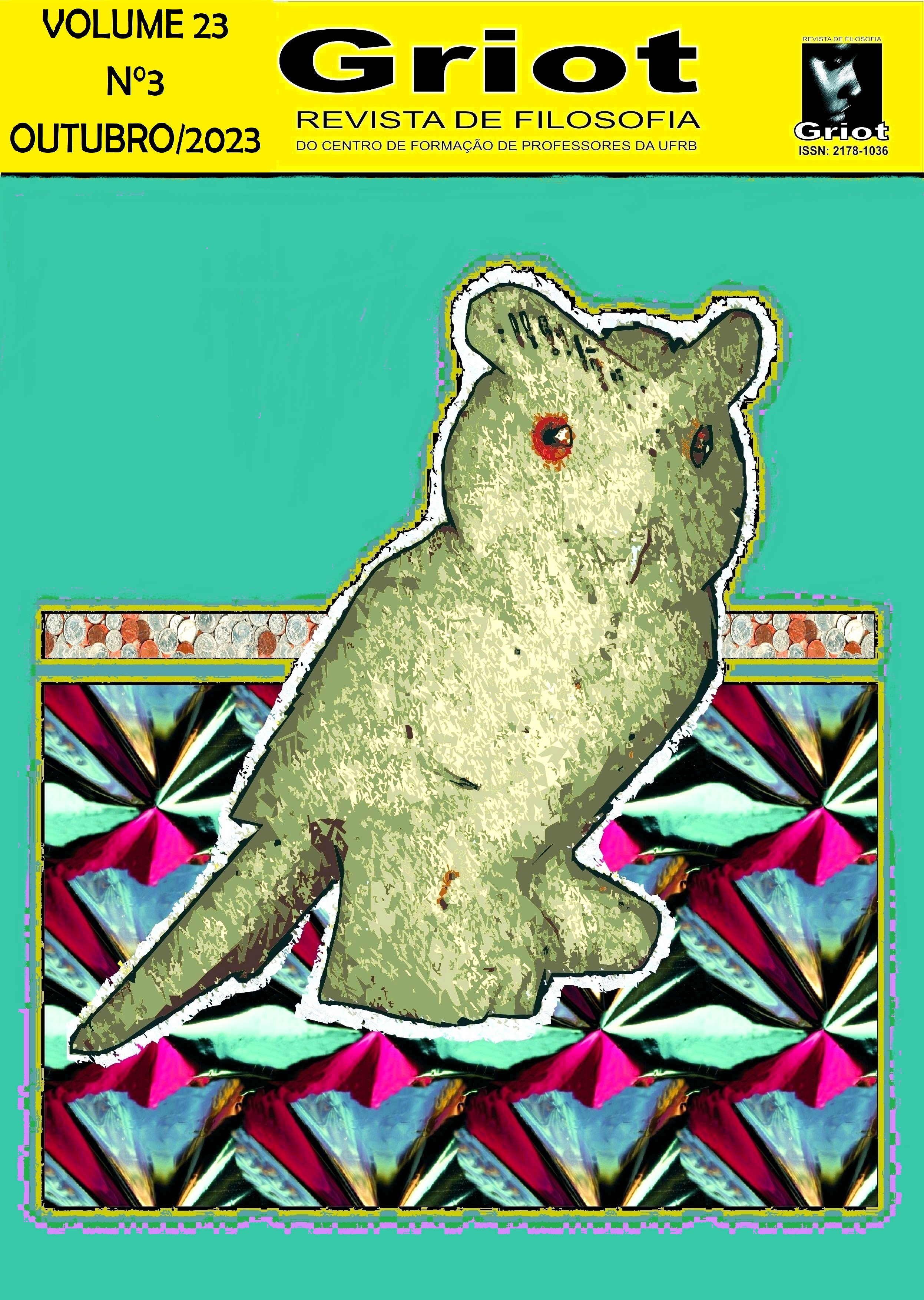The common sense’s criterion in the unification function, according to Thomas Aquinas
DOI:
https://doi.org/10.31977/grirfi.v23i3.3429Keywords:
Perception; Common sense; Unification function; Magnitude; Thomas Aquinas.Abstract
In this article, we pretend to explore the Thomas Aquina’s theory that is developed to explain the functioning of human perception. In that theory are introduced the operations carried out by the common sense, among them the unification function of the manifold given by the external senses. It will be explored precisely the problem that follows: what kind of criterion the common sense use in the unification of the manifold. In order to identify the correct answer, we begin with a investigation about the kinds of information that are apprehended by the external senses.We pretend to show that there are two basic kinds of information: informations about qualities and quantity of empirical objetcs. After, it will be investigated how Thomas Aquinas caracterizes the unification function by means of the manifold simultaneos perception. At last, it will be reconstructed the criterion of unification function through the Aquina’s thesis that the informations about quantity are apprehended as subject of informations of qualities. In that extent the unification of apreehended qualities can be made by the identification of the common subject of the qualities.
Downloads
References
AQUINO, Tomás de. Quaestiones de quodlibet. In: ALÁRCON, Enrique (Ed.). Opera Omnia. Universidad de Navarra, 2000.
AQUINO, Tomás de. Sentencia Libri De Sensu et Sensato. In: Opera Omnia, Sancti Thomæ de Aquino. Ed. Leonina, tomo XLV. Paris: Vrin, 1985.
AQUINO, Tomás de. Sentencia Libri De Anima. In: Opera Omnia. Ed. Leonina, tomo XLV, 1. Paris: Vrin, 1984.
AQUINO, Tomás de. Commentary On Aristotle’s De Anima. Tradução: Kenelm Foster, Sylvester Humphries. New Haven: Yale University Press, 1951.
AQUINO, Tomás de. Suma Teológica. V. II. Tradução: Carlos-Josaphat Pinto de Oliveira (et al.). São Paulo: Loyola, 2005.
AQUINO, Tomás de. Commentary on Aristotle’s De Sensu et Sensato. Tradução: Kevin White. Washington: Catholic University of America Press, 2005.
GLASNER, Ruth. Gersonides Unusual Position on “Position”. Centaurus, v. 45, n.01, p. 249-263, 2003.
GREGORIC, Pavel. Aristotle on the Common Sense. Oxford: Oxford University Press, 2007.
GUERRERO, Markos Klemz. Elementos de uma teoria tomista da sensação. 2016. 153 f. Tese (Doutorado em Filosofia) – Programa de Pós-graduação Lógica e Metafísica, Universidade Federal do Rio de Janeiro
GUERRERO, Markos Klemz. Consciência e discernimento sensíveis: o sentido comum em Tomás de Aquino. Philosóphos, v. 27, pp.1-52, 2022.
HELLER-ROAZEN, Daniel. Le Corps Tactile. Revue des langues romanes, v. CXXII, n.1, p. 33–51, 2018.
KAHN, Nick. Aquinas on quality. British journal for the history of philosophy, v. 24, n. 1, p. 1-22, 2015.
LANG, David P. Aquinas and Suarez on the essence of continous physical quantity. Laval théologique et philosophique, v. 58, n. 3, p. 565-595, 2002.
LISSKA, Anthony J. Aquinas's Theory of Perception: An Analytic Reconstruction. Oxford: Oxford University Press, 2016.
MAGNO, Alberto. Summa theologiae. In: BORGNET, Augustini (Ed.). Opera omnia. Paris: Bibliopolam Editorem, 1895, v. 32
PASNAU, Robert. Thomas Aquinas on Human Nature. Cambridge: Cambridge University Press, 2002.
Downloads
Published
How to Cite
Issue
Section
License
Copyright (c) 2023 Felipe de Souza Terra

This work is licensed under a Creative Commons Attribution 4.0 International License.
The authors who publish in Griot: Revista de Filosofia maintain the copyright and grant the magazine the right of first publication, with the work simultaneously licensed under the Creative Commons Attribution 4.0 International License, allowing sharing and adaptation, even for commercial purposes, with due recognition of authorship and initial publication in this journal. Read more...









































































